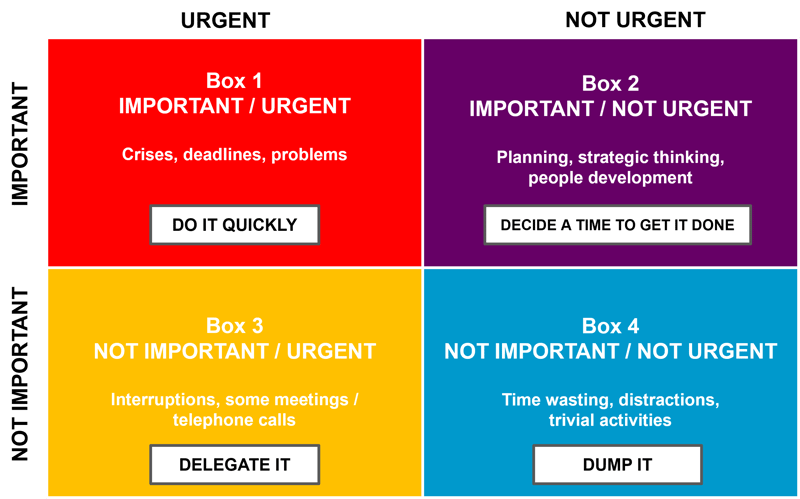A common concern for those on our leadership programs is the feeling that they have too much to do and too little time. Whether they are supervisors / managers on our LEADlight program, or senior leaders on our LEAD™ program, the challenge of managing their ever-growing ‘to-do’ list whilst tackling the daily crises and issues that arise can often feel over whelming.
The fact of the matter is, you cannot control or manage time. It’s simply not possible. We all have the same number of hours in a day. You can’t get an extra hour no matter how good you are. And you can’t re-use the minutes that you wasted the previous day. As John C. Maxwell the American author wrote:
"Time management is an oxymoron.
Time is beyond our control, and the clock keeps ticking regardless of how we live our lives."
So, don't try to manage time. The key is to better manage yourself so that you're being more effective and helping your team to grow and become more autonomous.
So, where do you start? We offer 3 thoughts:
1. PrioritiseA tool such as the Urgent – Important matrix can help you to focus your time appropriately on those important tasks that often don’t have a set deadline such as people development, relationship building, strategic thinking, personal learning goals. Because they are not urgent, they can often sit on our ‘to-do’ list for weeks or months whilst we procrastinate and spend our time focusing on urgent or non-important tasks. However, at some point, these tasks will become urgent or may never get to the top of your list and get done.

By using this matrix, you can make sure that you quickly do the necessary tasks in Box 1, delegate / empower others to deal with Box 3 issues, stop wasting your time in Box 4, and you can then focus your attention on the important activities in Box 2.
2. Encourage decision making
Whilst there are many decisions that will need to remain with senior leaders, you should ensure that, where possible, decision making is delegated throughout the organisation to the lowest possible level. Meaning that decisions are made by the person who is best placed to do so. Your employees will inevitably be the ones who are closest to your customers, your processes and your products or services, which means they are usually the people with the right information to make the best decision.
By creating a culture that encourages employees to empower themselves and take responsibility for decision-making where appropriate, it will free you from having to deal with a multitude of decisions, preventing you from becoming a bottleneck and allowing you time to focus on strategic issues.
3. Reflect
It is widely said that Albert Einstein defined insanity as,
“doing the same thing over and over and expecting different results.”
And for those struggling with an overwhelming schedule, it can feel like you are stuck in a hamster wheel chasing your tail, running at high speed and using lots of energy, but getting nowhere fast.
Rather than just continuing to do what you’ve always done and expecting (or hoping for) things to improve take a step back and question, in a positive way, what you’re doing and why you’re doing it. You can then identify a better, or more efficient, way of doing it in the future.
|
If you would like to learn more about our LEAD™ program for owner-managers, directors and senior managers, please get in touch with Jo Draper here. Our next LEAD™ program starts on 19th and 20th April. Don't miss out! |




